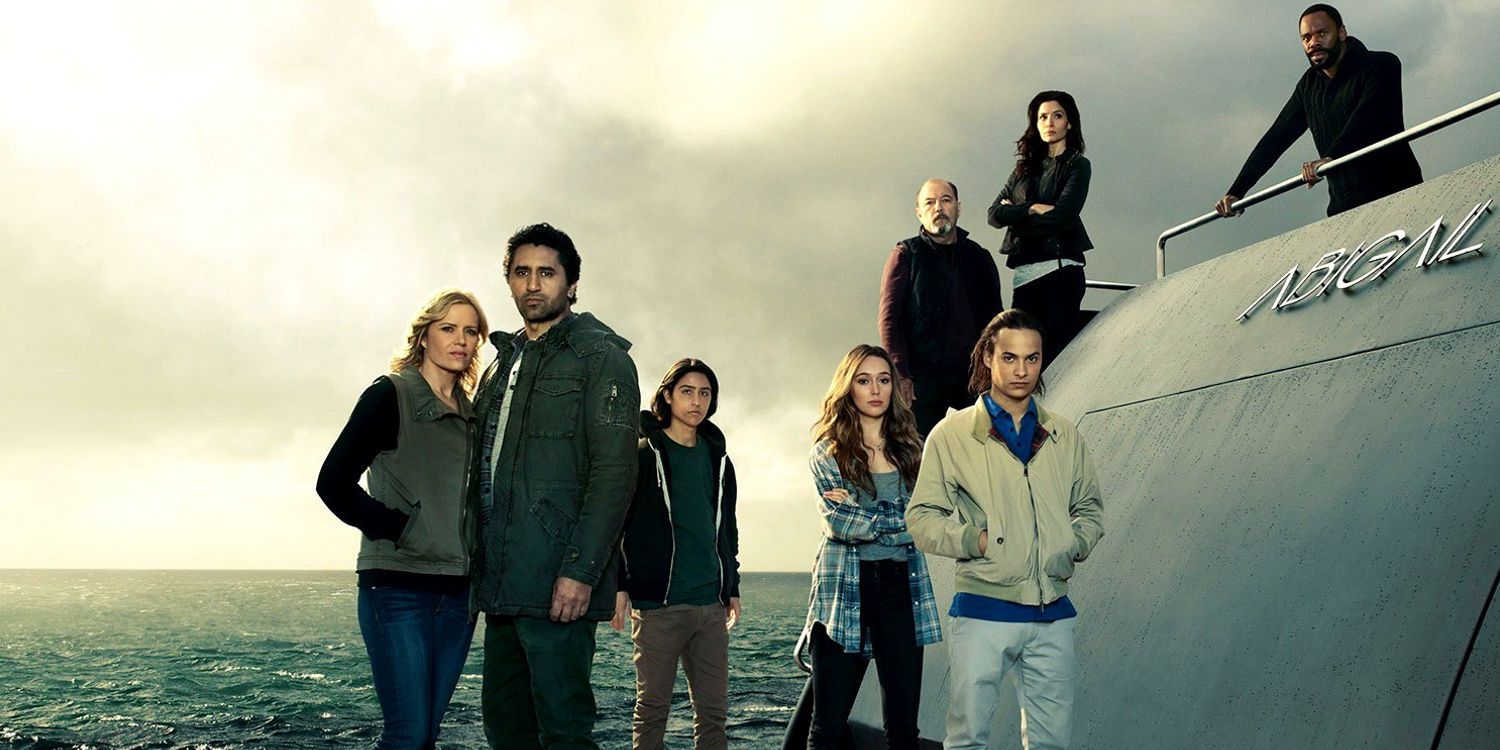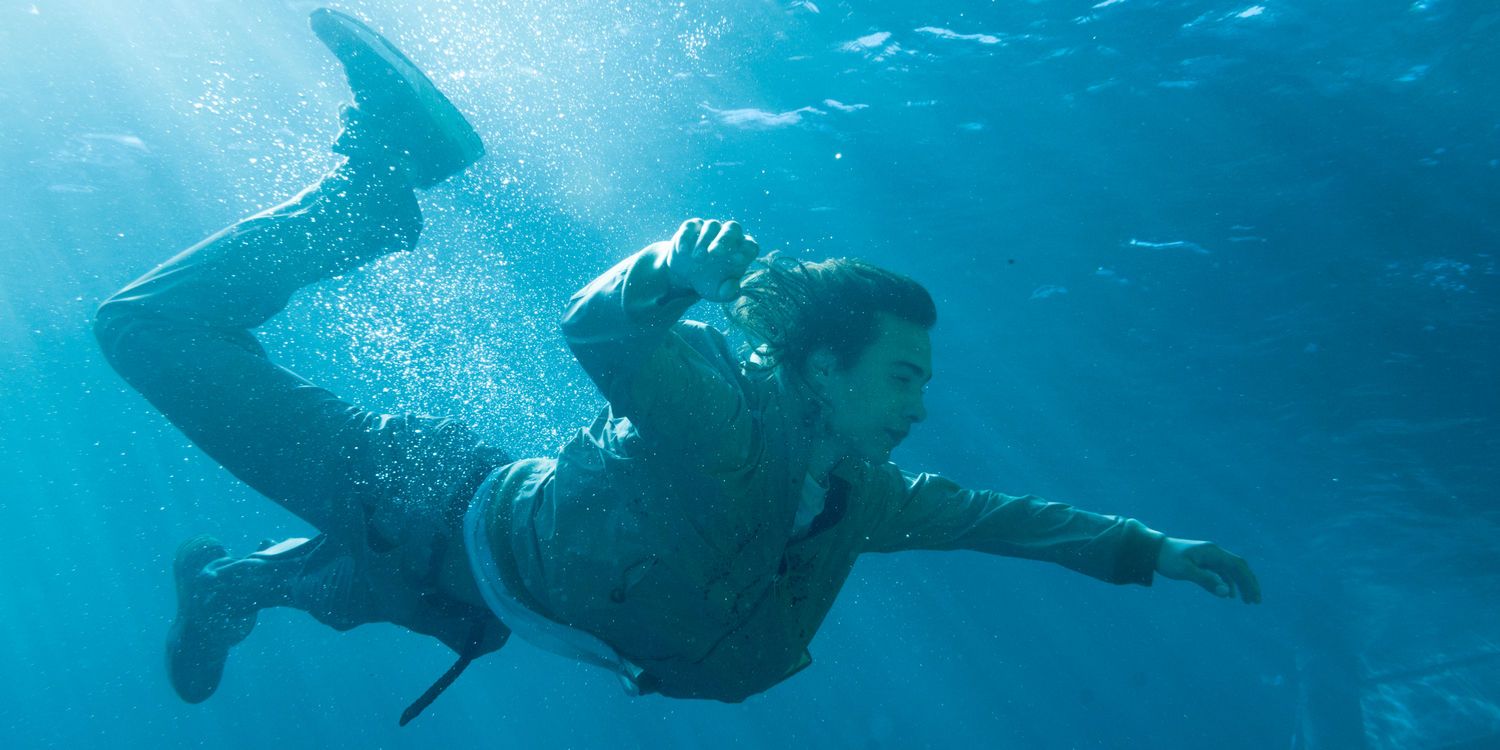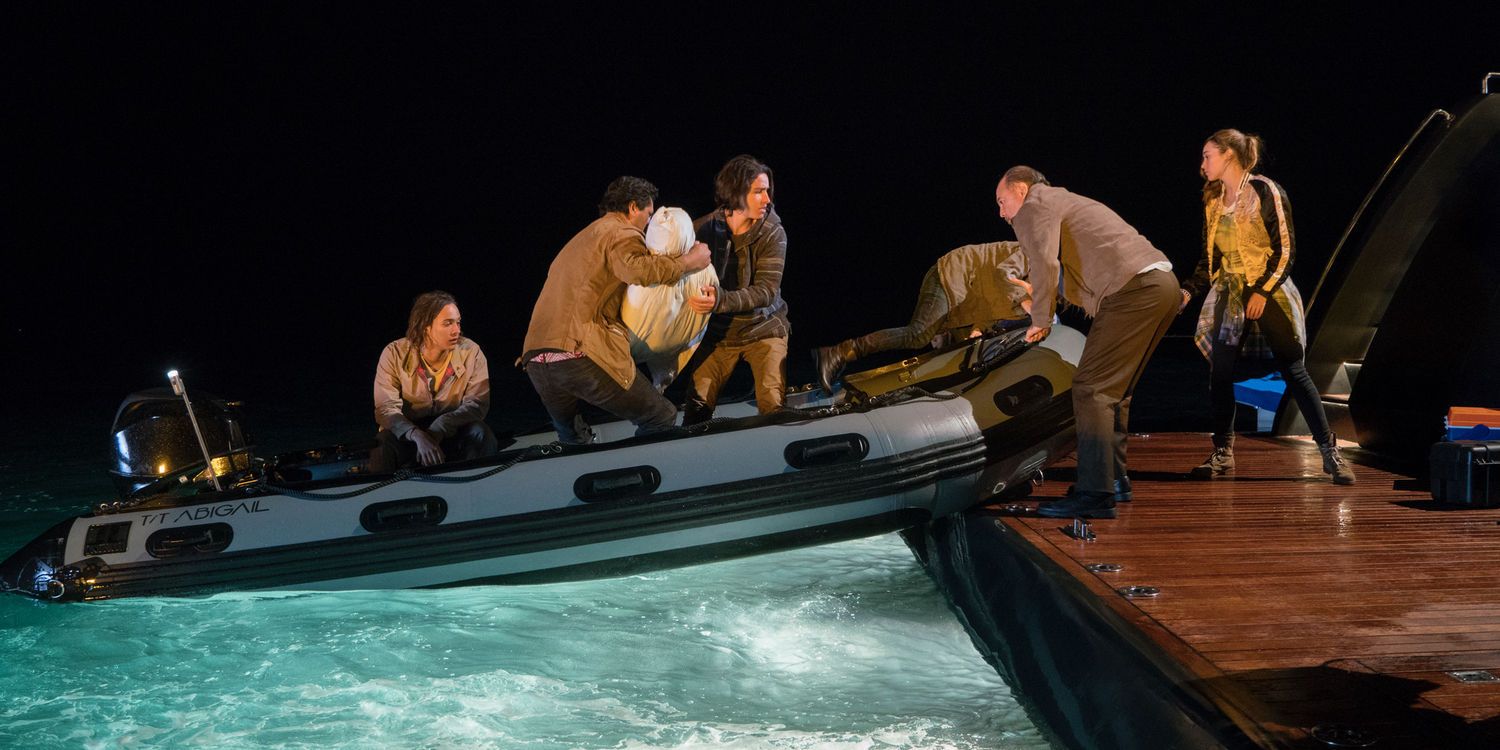[This article contains SPOILERS for Fear the Walking Dead season 2, episode 2.]
-
AMC's zombie-lovin' prequel, Fear the Walking Dead, is only two episodes into its second season and already there are signs the show has reimagined itself as something different from the claustrophobic horror series that aired six episodes in the fall of 2015. That introduction served as an entry point for the diverse cast of characters making up what is ostensibly The Walking Dead West, but it also granted viewers greater insight into what happened during the early days of society's collapse via an undead epidemic. The brief season flirted with the idea of becoming a domestic melodrama set against the backdrop of an extraordinary, world-changing event. And while the success or failure of that effort depends largely on the mileage viewers got from watching the apocalypse unfold from the perspective of one East Los Angeles neighborhood, the show's future appears hitched to its ability to move in and out of short, episode-length stories, all of which are framed by an ongoing voyage on a luxury yacht.
It's an interesting new direction for the series that, if showrunner Dave Erickson chooses to stick with it, could transform Fear the Walking Dead from a mere spinoff of TV's current ratings champ into something much more unique and potentially appealing in the long run. The basic conceit of the series is still the same: a group of individuals connected by familial ties and tenuous loyalty to one another attempt to outrun the shambling dead and the suddenly lawless living, in an effort to find some means of permanent safety. The interesting variable, then, is the welcome mobility of the characters – something the landlocked survivors of The Walking Dead have been largely denied. Even as Rick and Co. continue to tool around in salvaged cars, motorcycles, and RVs the characters of TWD are limited to a relatively small geographic area because it's telling a version of the story told in the comics. But Fear isn't based on a pre-existing storyline, and as such isn't limited the types of stories it can tell; it is free to function first and foremost as a television show. And as was demonstrated when it set sail for the high seas in the season 2 premiere, that freedom might just be what the series needs to make the transition from slow-paced zombie drama to weekly adventure program that just happens to take place in a zombie-infested world.
With a restructured and potentially reenergized show at stake, it is no wonder Victor Strand's $10 million luxury yacht was anthropomorphized with a human name. Forget about Travis, Madison, Nick, or Alicia – right now, the Abigail is the most important character on the show. Sure, that's a little like saying Negan's bat Lucille is the most interesting addition to The Walking Dead, but in this case it might actually be true. Without the Abigail, Fear the Walking Dead would be a retread of its predecessor, but with a device like a luxury yacht capable of taking the survivors to a wide variety of locations, the storytelling possibilities become much more varied and potentially interesting.
Think of how FTWD might become a more engaging show on a week-to-week basis if it embraced the episodic structure of certain sci-fi series like Star Trek (original, TNG, Voyager – take your pick), Firefly, or even Farscape. There're certainly more comparisons to be made, but you get the point: Toss a handful of characters onto a ship, push the ship out into the unknown, give them a basic plot to circle back to every so often, and you have a recipe for an exciting adventure series that can easily sustain itself because the one fixed location is the characters' means of entry into every new story – the Enterprise, Serenity, Moya, and now, the Abigail. This particular device is also guaranteed to keep the show moving at a decent clip (something The Walking Dead has struggled with at various points in each of its six seasons). Putting the cast on a boat and having them travel the California coastline (and beyond), encountering survivors and becoming temporarily involved in the plots of those equally transitory characters frees the show from a reliance on lengthy storylines spent repetitively discovering, inhabiting, and losing control of a particular setting (e.g., Hershel's farm, the prison, Alexandria).
Of course, it's one thing to have the opportunity of a new direction and another thing altogether to make proper use of it. While the second episode, 'We All Fall Down', demonstrated how the show could use the Abigail to get characters in and out of a single-serving storyline, the actual storyline itself was not nearly as compelling as the Fear's season 2 potential. It's not that the basic building blocks weren't there, though. The idea of Travis and his slowly gelling cohort of survivors setting anchor at a ranger station and making the acquaintance of a seemingly normal family, only to discover things aren't as normal as they seem, is perfect fodder for an in-and-out story.
While not a particularly thrilling installment, the episode could be considered a successful trial run of the series' new direction, if that is in fact what's going on. In spite of its diffuse middle part and flat characters, 'We All Fall Down' demonstrated the writers' ability to tell a complete story from beginning to end. Moreover, the show resisted the temptation for Travis and Madison (or anyone else, really) to bicker over whether or not the ranger station could become their new home. There were inklings of the episode heading in that direction, but it miraculously corrected course and doubled down on the more promising seafaring adventure (and the mysterious destination sought by Strand) by making its final minutes about the need to leave the island instead.
This works to the series' benefit in two ways: 1) It gives the characters something to do week in and week out, a little adventure to have and maybe develop from, something that may one day go beyond the normal Walking Dead plot of simply not dying, and 2) it gives those watching the sense that anything could happen. Granted that falls within the relative real-life parameters the series normally works in (aside from, you know, zombies), but as with the core characters' ability to move from place to place, the most important thing is freedom; and that freedom may very well inspire the writers' room to explore, to be adventurous, and to take risks they otherwise might not normally take.
The third episode of Fear the Walking Dead airs this weekend, and for all we know the Abigail will sink, be run aground, or end up permanently docked somewhere and the show will hastily find its survivors wandering on foot much like their counterparts on the other side of the country. But for now, it's nice to think the show may aspire to be something different and to recognize that, as much as the Abigail have been a life-saver for the series' characters, it might also be the show's best chance at staying afloat.
-
Fear the Walking Dead continues this Sunday with 'Ouroboros' @9pm on AMC.
Photos: Richard Foreman/AMC



